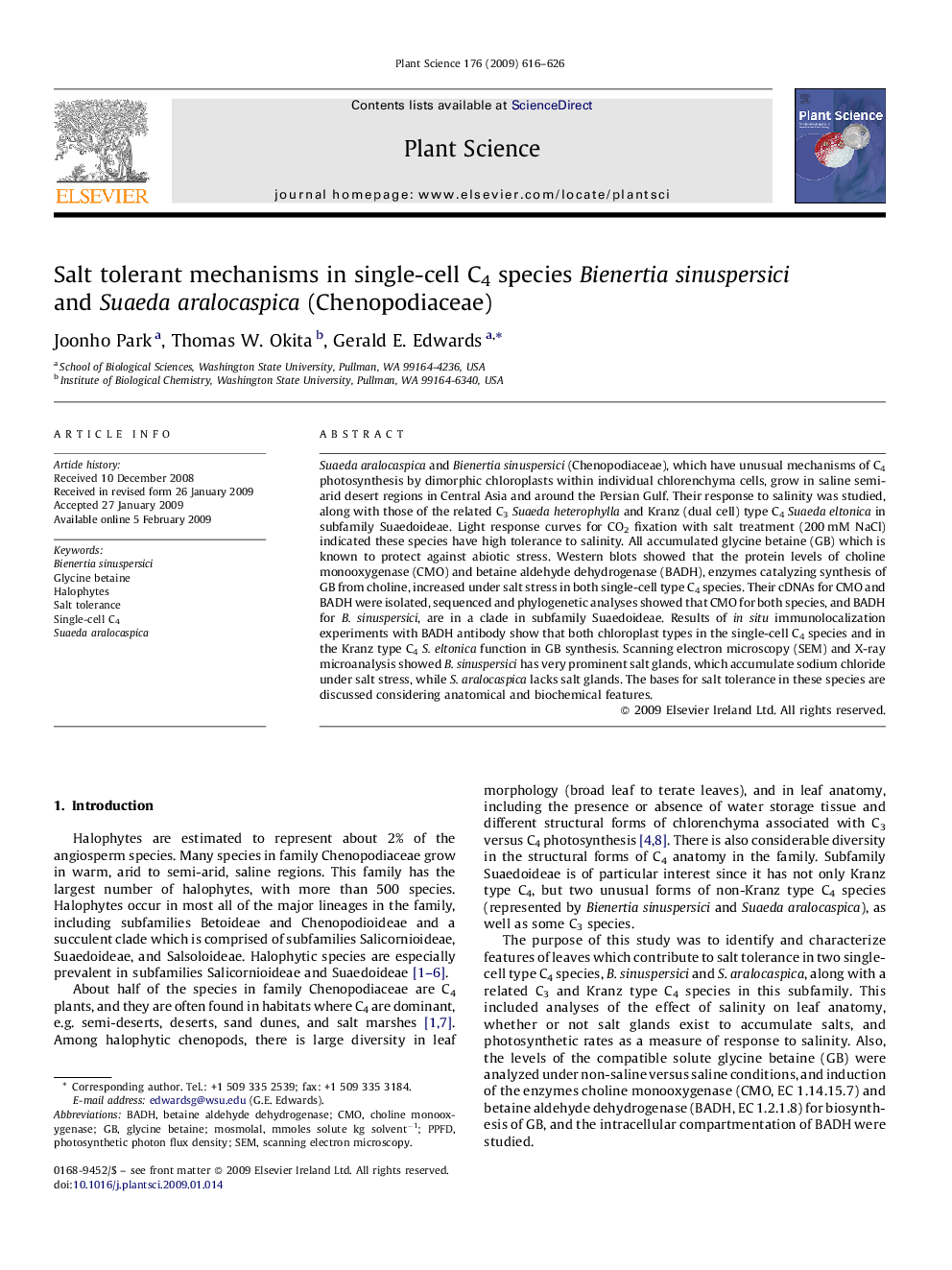| Article ID | Journal | Published Year | Pages | File Type |
|---|---|---|---|---|
| 2017664 | Plant Science | 2009 | 11 Pages |
Abstract
Suaeda aralocaspica and Bienertia sinuspersici (Chenopodiaceae), which have unusual mechanisms of C4 photosynthesis by dimorphic chloroplasts within individual chlorenchyma cells, grow in saline semi-arid desert regions in Central Asia and around the Persian Gulf. Their response to salinity was studied, along with those of the related C3Suaeda heterophylla and Kranz (dual cell) type C4Suaeda eltonica in subfamily Suaedoideae. Light response curves for CO2 fixation with salt treatment (200Â mM NaCl) indicated these species have high tolerance to salinity. All accumulated glycine betaine (GB) which is known to protect against abiotic stress. Western blots showed that the protein levels of choline monooxygenase (CMO) and betaine aldehyde dehydrogenase (BADH), enzymes catalyzing synthesis of GB from choline, increased under salt stress in both single-cell type C4 species. Their cDNAs for CMO and BADH were isolated, sequenced and phylogenetic analyses showed that CMO for both species, and BADH for B. sinuspersici, are in a clade in subfamily Suaedoideae. Results of in situ immunolocalization experiments with BADH antibody show that both chloroplast types in the single-cell C4 species and in the Kranz type C4S. eltonica function in GB synthesis. Scanning electron microscopy (SEM) and X-ray microanalysis showed B. sinuspersici has very prominent salt glands, which accumulate sodium chloride under salt stress, while S. aralocaspica lacks salt glands. The bases for salt tolerance in these species are discussed considering anatomical and biochemical features.
Keywords
Related Topics
Life Sciences
Agricultural and Biological Sciences
Plant Science
Authors
Joonho Park, Thomas W. Okita, Gerald E. Edwards,
